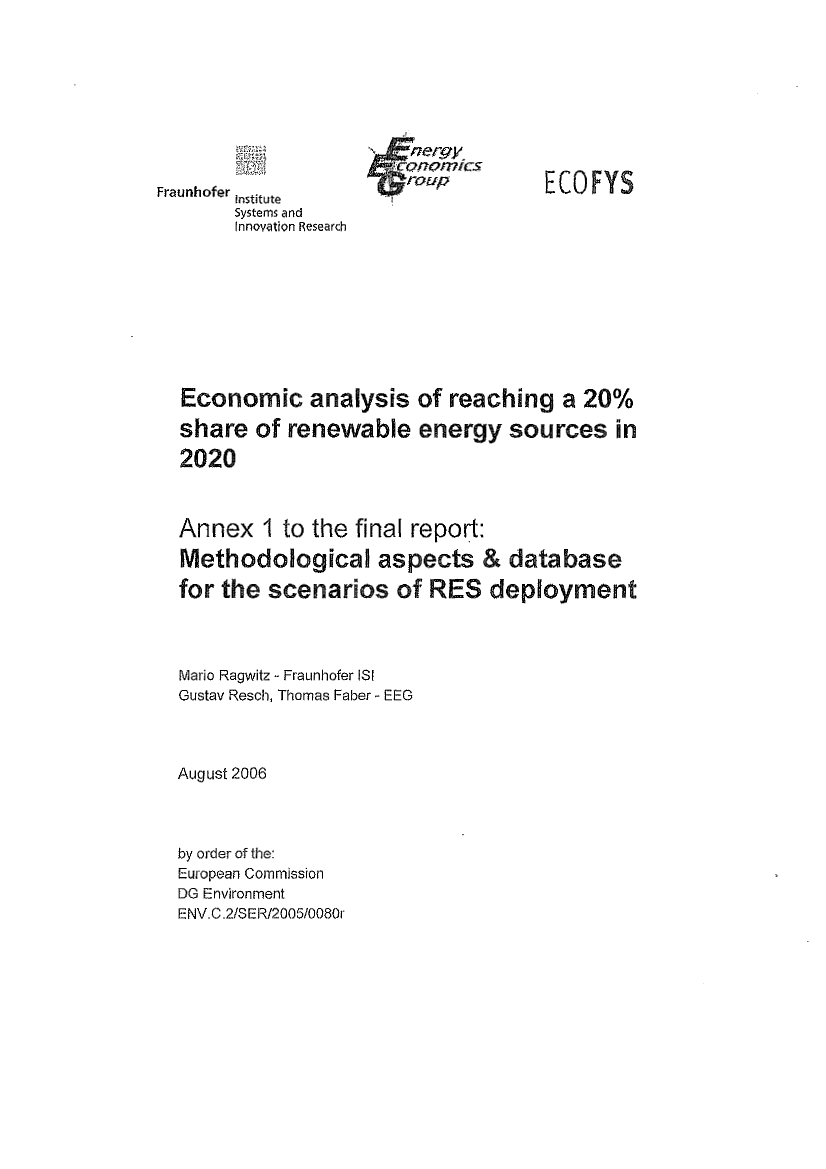
JEergy
Fraunhofer U)5titute
Systems and
Innovation Research
cQi7QflflcS
rjfVUP
ECOFYS
Economic anaVysis of reaching a 20%
share of renewable energy sources in
2020
Annex I to the final report:
Methodological aspects & database
for the scenarios of
RES
deployment
Mario Ragwitz Fraunhofer 1SF
Gustav Resch, Thomas Faber - EEG
August 2006
by order of the:
European Commission
DG Environment
ENV.C .2/SER/200510080r